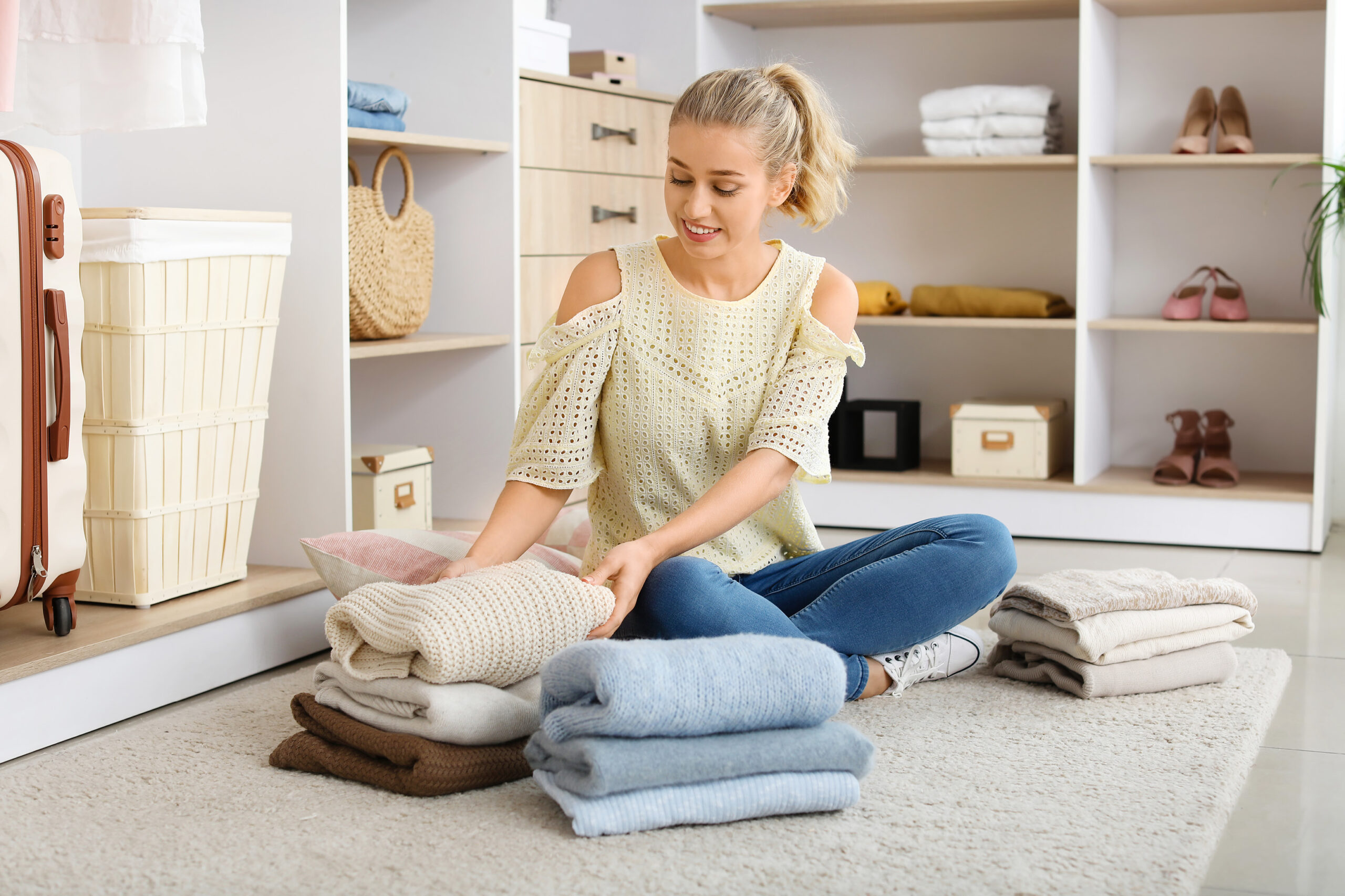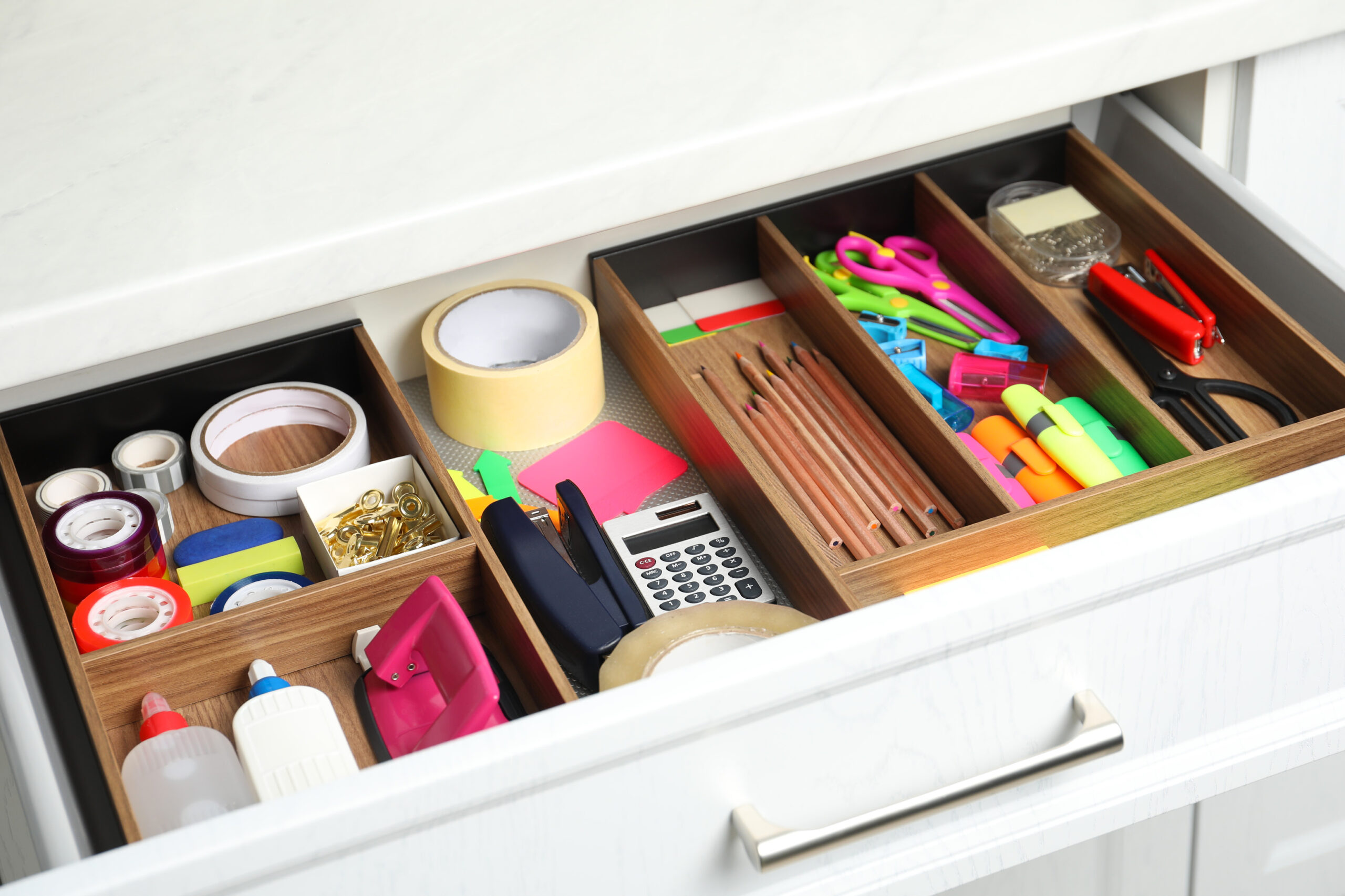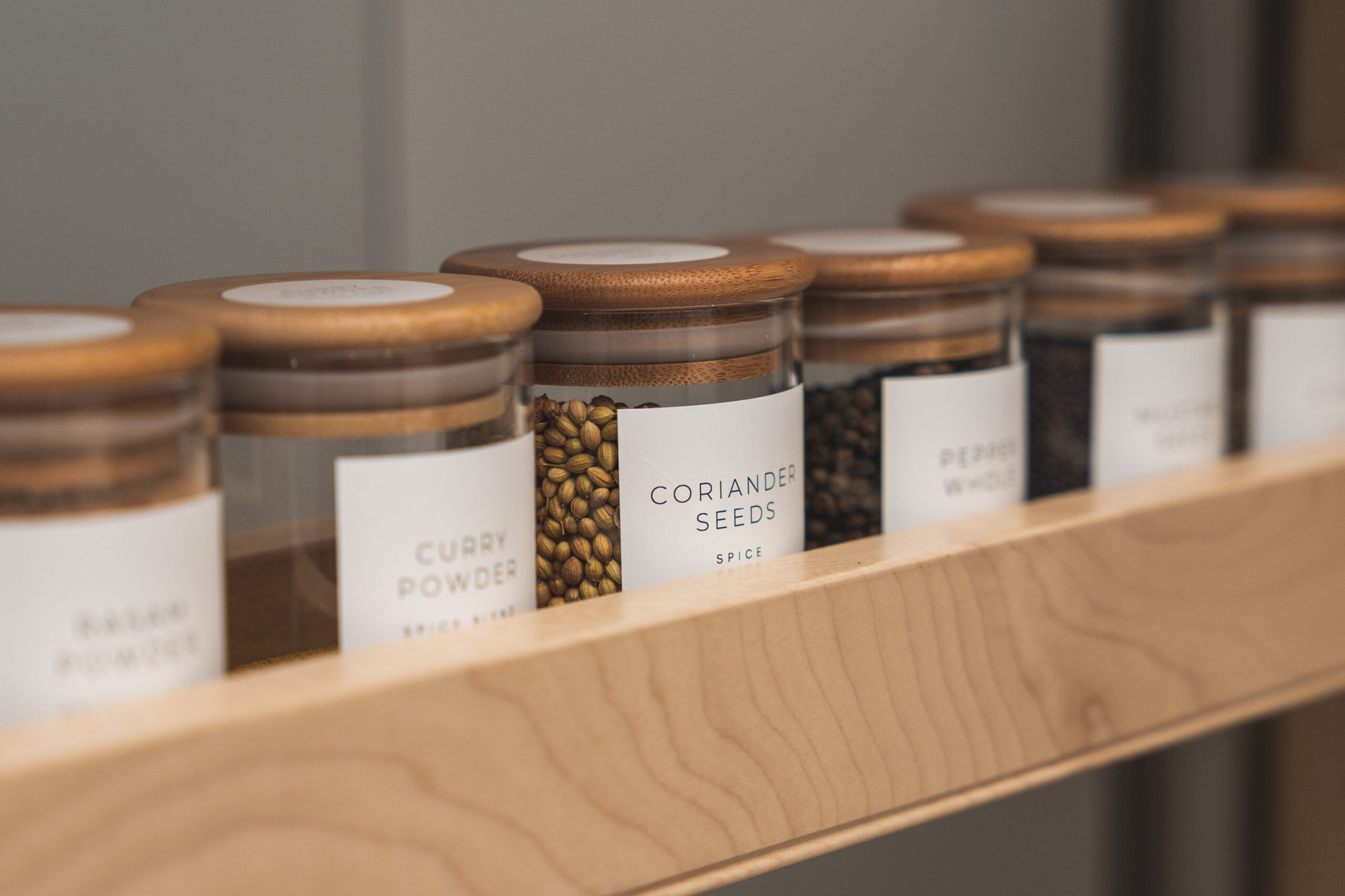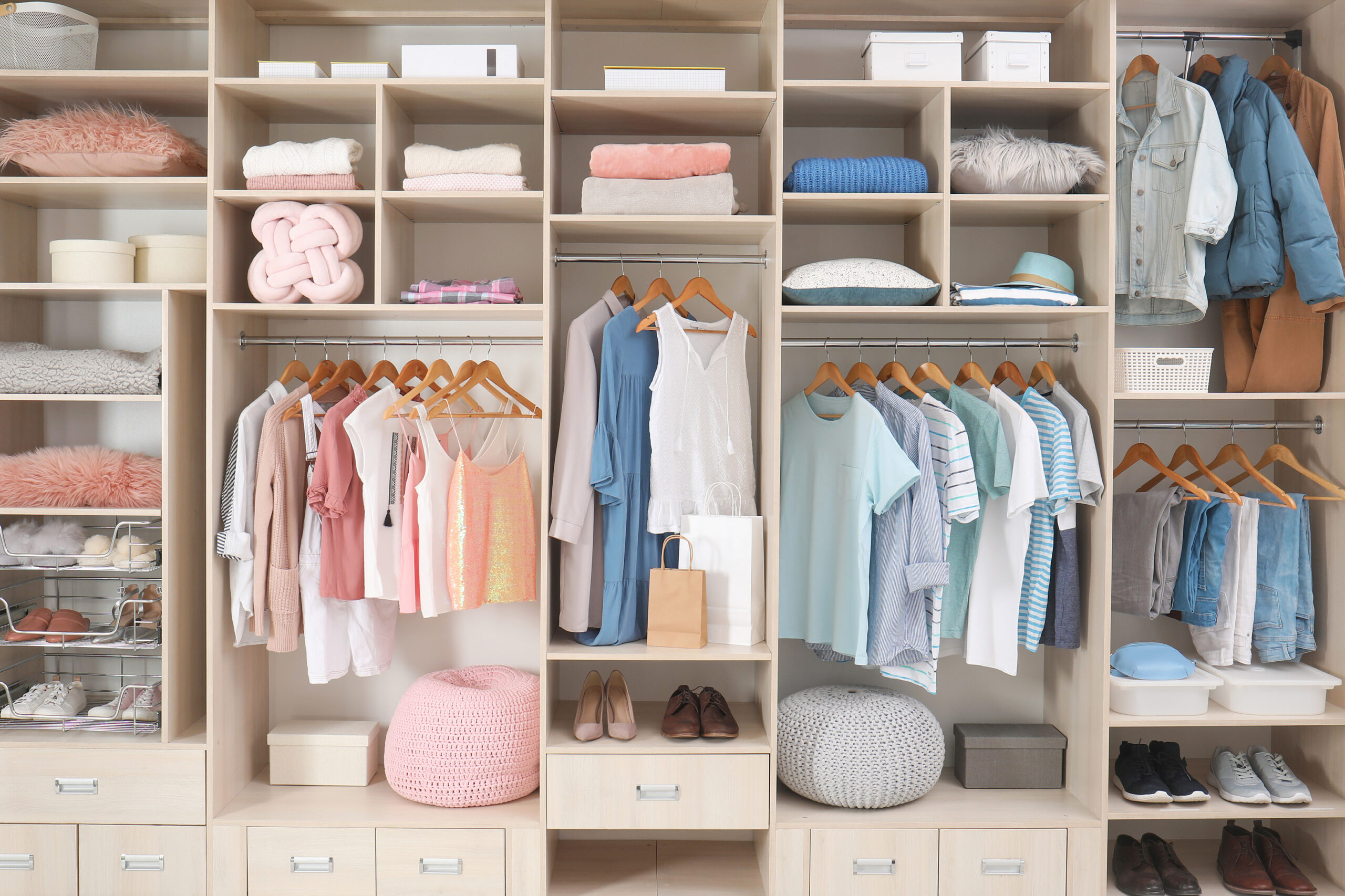Organizing isn’t only about making a space more visually appealing; it’s about making a space more soothing. It’s about creating a home where as soon as you step through the door, you feel calm and comfortable. Organizing is a form of self-care and allows you to transform a space into an environment that is nurturing and peaceful. Say goodbye to clutter and common stressors, see ya later to piles of clothes, and sayonara to stacks of paper. Create a sanctuary at home that can make your life simpler and a great deal easier.
People experience plenty of stress when it comes to work, finances, and hectic to-do lists. Your home should serve as a refuge, an area free from chaos and clutter. Below are tips on how to organize, purge, donate, and take control of your home. Let’s get started!
Get into an Organizing Mindset
Make sure you’re in the right headspace before you start organizing. We recommend a few moments of mindfulness and deep breathing to help you get into the proper mindset. The next step would be to change into some comfy clothes and start by picking one room or space at a time. There is no need to tackle your entire home in one day. Set reasonable goals.

One of the main reasons people hold onto something is guilt. Maybe the vase was a gift, perhaps it was expensive when you purchased it, but you don’t really like it anymore. Regardless, it’s important to recognize that keeping an item in the back of your closet or stuffed in a drawer won’t make you feel better. Once you donate it or sell it, you will feel lighter. Many people also hold onto items is because they are worried they will regret getting rid of them. Keep in mind, just because something might be difficult to part with does not mean you will regret getting rid of that item. You most likely won’t notice it’s gone. The main thing to remember is you’re getting rid of a thing, not a person or a memory. Another good rule to follow is if you haven’t used the item in the past year, you most likely will not use it again. As for all of the things you might use “one day,” the time to get rid of that item is now. These items and possessions are most likely just dragging you down and taking up space.
Organizing Tips
Gather supplies before you start that will help you throughout your process. Grab sticky notes, a marker, and tape so you can create labels. Pick up garbage bags and cardboard boxes to make areas to collect things for donations, to sell, to trash, and recycle. If you are cleaning out chemicals and cleaners, wear gloves and goggles if needed.
You need to assess why you own the items you do. Ask yourself the following questions to help you decide if you truly need to hold onto something. Does the item still have a purpose? Does it bring you joy? By removing things you no longer need or don’t bring you happiness, you create simplicity in your life.
If you don’t have all of the parts for an item or are missing cords and pieces that you need to make something work properly, either get rid of it or write down the part you need to order right away as not to forget. Test everything to make sure it works, from electronics to office supplies. If it doesn’t work, it’s merely eating up space.
When going through cords, take the time to label them. Fold an adhesive or piece of tape over the wire’s end and use a fine point permanent marker to write what it is. This will save you an incredible amount of time in the future, especially if you move. Say goodbye to Ziplock bags filled with miscellaneous cords.
When cleaning a desktop or counter space, the first thing to ask yourself is what do you use on a daily basis. Remove anything that doesn’t make that list and place it in a drawer or bin. The less cluttered your workspace or kitchen counter is, the less distracted you’ll be and the more productive you’ll become.
Use drawer organizers so you can easily and quickly find what you need. This will prevent a junk drawer from forming where things are just thrown in and forgotten.

The back of doors and cabinets are excellent if you’re looking for extra storage space. Look into hanging door racks and cabinet hooks to provide valuable space for your many things. You can hang towels, tote bags, and other items that might otherwise be eating up drawer space.
Using clear containers in closets, garages, and kitchen pantries can make your life much easier. The clear containers not only keep things together and organized but allow you to see everything without having to go through tons of bins. If you don’t want to purchase or use clear containers, add a clean looking label to the outside.

If you don’t have a ton of space, go vertical. Shelf risers are great and stackable, which allows you to double the surface area. These are perfect for shoes, so they don’t end up in a pile on your closet floor.
If you’re tired of losing your keys or sunglasses, set up “drop zones” around your home. Create a designated drawer in an entryway console or a wall organizer by the garage door. As soon as you walk through your door, place your car keys in the dish and other items you can quickly grab next time you’re headed out.
Look into furniture that is as versatile as it is stylish. Many ottomans nowadays double as storage containers, so you can hide all of the remotes and blankets when you’re not using them. If you are looking to add a bench in the entryway, look for one with a bottom compartment to store shoes, umbrellas, and other things you and your guests don’t want to look at. Think about functionality.
Do something fun and positive after you’re done.
Extra Organization Tips
Organization Tips for Every Room of Your Home
Pantry Organization Hacks to Streamline Your Kitchen
Home Office Storage Organization Solutions
Dealing with Clutter in a Sustainable Way Before an Open House


